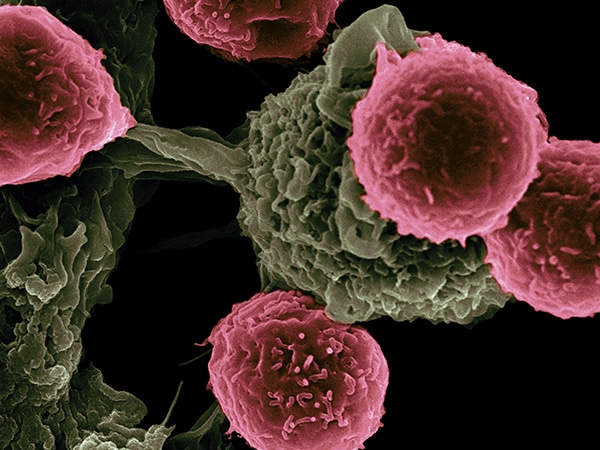Predicting Response to Immunotherapy Early
A new study describes a biomarker to predict immunotherapy response early in the course of treatment and reports on a noninvasive imaging method to detect this biomarker.

Immunotherapies, such as immune checkpoint inhibitors, are revolutionizing cancer treatment, but they only work in a percentage of patients. This means that many patients receiving these treatments may not benefit and yet deal with the side effects, in addition to delays in attempting other therapies.
“The ability to differentiate early in the course of treatment patients who are likely to benefit from immunotherapy from those who will not can greatly improve individual patient care and help accelerate the development of new therapies,” said Umar Mahmood, MD, PhD, professor of radiology at Harvard Medical School and director of the Division of Precision Medicine at Athinoula A. Martinos Center for Biomedical Imaging at Massachusetts General Hospital, Boston.
Dr. Mahmood was the lead author of a study looking at a potential biomarker to predict patients’ responses to immunotherapy.
“In our study, we found a marker that was highly predictive of response to immunotherapy at a very early time after starting treatment, and we were able to design an imaging probe to detect this marker and accurately predict response noninvasively,” he said.
Dr. Mahmood and his team showed in their study, published in Cancer Research, a journal of the American Association for Cancer Research, that a noninvasive PET imaging method that measures granzyme B, a protein released by immune cells to kill cancer cells, was able to distinguish mouse and human tumors that responded to immune checkpoint inhibitors from those that did not respond early in the course of treatment.
Traditional imaging techniques that measure tumor size or tumor glucose uptake are not always suitable for measuring immunotherapy response, Dr. Mahmood noted. He and his colleagues designed a probe that binds to granzyme B after it is released from the immune cells and attached the probe to a radioactive atom, so they could directly measure tumor cell killing using PET scanning.
The team tested their probe in tumor-bearing mice before and after treatment with immune checkpoint inhibitors and found that the mice with high granzyme B in the tumor, and therefore high PET signal, responded to the therapy and their tumors subsequently regressed, whereas those with low PET signal did not respond to the therapy, and their tumors continued to grow.
They then tested their probe on nine human melanoma biopsy samples, six from patients treated with nivolumab (Opdivo) and three from those treated with pembrolizumab (Keytruda). They detected high levels of granzyme B in the samples from responders and much lower levels in the samples from nonresponders.
“These findings could have a significant impact on drug development, as different combinations could be imaged at very early time points in patients and the levels of tumor granzyme B used to compare treatments and rank effectiveness,” Dr. Mahmood said. “Further, therapeutics that achieve high levels of granzyme B release can be advanced faster and those leading to low granzyme B release can be altered or eliminated.”
